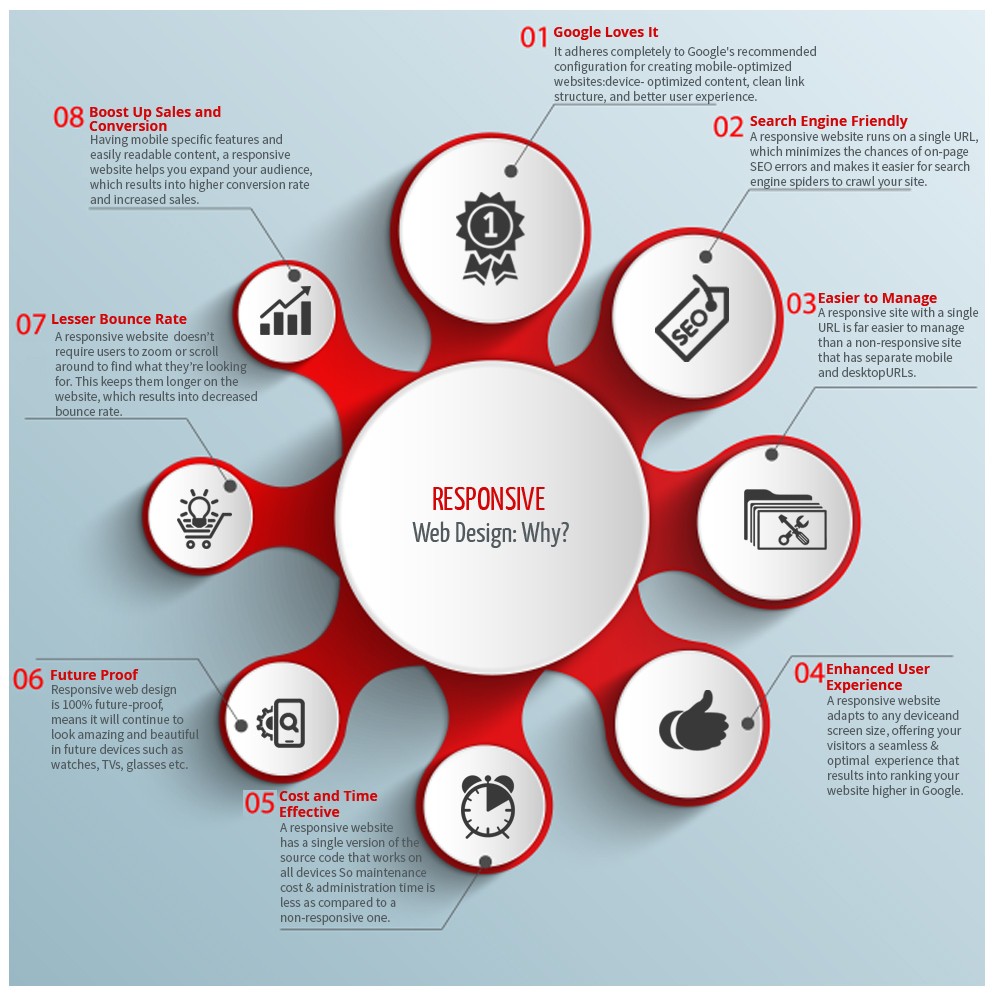Internet Site Style Fundamentals: Tips For Structure A User-Friendly Website
Internet Site Style Fundamentals: Tips For Structure A User-Friendly Website
Blog Article
What Does Digital Marketing Agency Do -Hovmand Thrane
When it comes to internet site style, making sure user-friendliness is vital. From receptive style to structured navigating, every component plays a critical role in developing a site that deals with your audience's requirements. However what about the better details that can make or damage a user's surfing experience? Keep tuned as we uncover some often-overlooked suggestions that can raise your internet site's usability to the following degree, making it absolutely stick out in the electronic landscape.
Significance of Responsive Style
Responsive style is a vital aspect of modern-day website advancement. Ensuring your website is receptive means that it can adjust to different screen dimensions and tools, offering a smooth experience for users.
With the enhancing use smart devices and tablet computers to access the net, having a receptive layout is vital for reaching a larger target market. It assists in boosting user experience by making your website very easy to browse and read on any type of device.
Furthermore, receptive layout can favorably affect your internet search engine rankings, as internet search engine like Google prioritize mobile-friendly websites. By having Best Digital Marketing Agency Near Me , you're additionally future-proofing your web site, as new tools with differing display dimensions remain to emerge.
Simplify Navigating Framework
To improve user experience and facilitate simple accessibility to details on your web site, enhancing the navigation framework is paramount. When creating your site, concentrate on developing a clear and intuitive navigation food selection that aids visitors find what they're looking for rapidly.
Limitation the number of menu things to the basics, grouping relevant pages with each other to prevent overwhelming users. Usage detailed tags that plainly suggest the material of each page, making it simpler for customers to recognize where each web link will certainly take them.
Take into consideration executing dropdown menus for subcategories to avoid cluttering the primary navigation bar. Furthermore, consist of a search bar plainly on the web page for customers that favor looking for specific info.
Prioritize mobile responsiveness in your navigation style to guarantee simple access on all gadgets.
Enhance Web Page Load Speed
Improving page load rate is vital for preserving visitors on your website. Slow-loading pages discourage users and can cause high bounce prices. To enhance web page tons rate, beginning by optimizing images. Press pictures without compromising quality to decrease their data dimensions.
Furthermore, enable browser caching to store frequently accessed resources locally, quickening load times for returning site visitors. Minify CSS, JavaScript, and HTML files by removing unnecessary personalities, comments, and formatting, boosting lots rate.
Consider utilizing a material shipment network (CDN) to distribute your website's web content throughout several servers worldwide, reducing latency for users accessing your site from various areas. Lastly, restrict using third-party manuscripts and plugins, as they can significantly influence load times.
Verdict
To conclude, by integrating responsive design, streamlining navigating, and optimizing page load rate, you can develop an user-friendly site that interest a wider target market and improves customer experience. These essential elements ensure that site visitors can easily access and browse your website throughout various tools, bring about increased involvement and fulfillment. By concentrating on these essential facets, you can develop a successful site that keeps individuals returning for even more.
